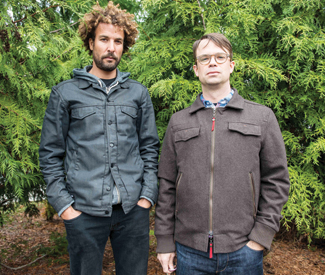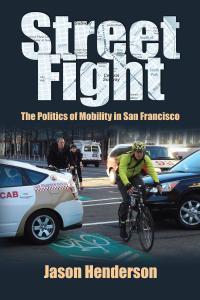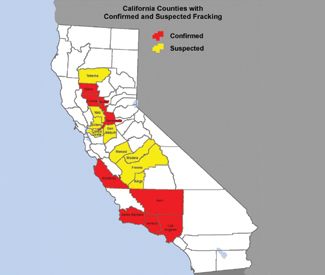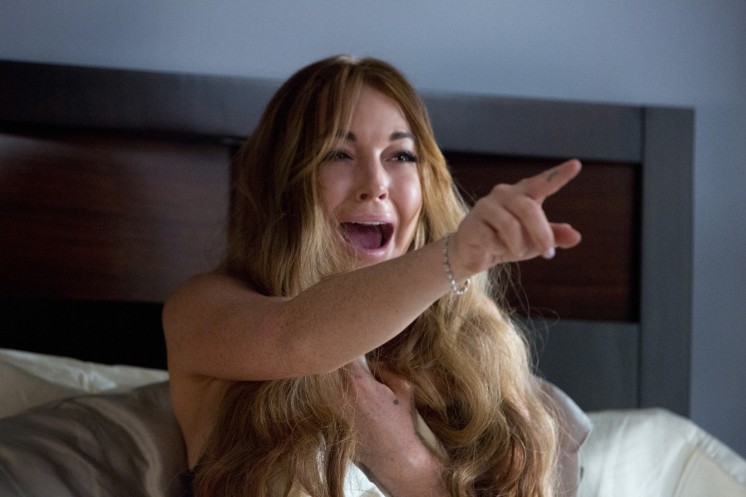Music listings are compiled by Emily Savage. Since club life is unpredictable, it’s a good idea to call ahead or check the venue’s website to confirm bookings and hours. Prices are listed when provided to us. Visit www.sfbg.com/venue-guide for venue information. Submit items for the listings at listings@sfbg.com. For further information on how to submit items for the listings, see Picks.
WEDNESDAY 17
ROCK/BLUES/HIP-HOP
Bad Religion, Bronx, Polar Bear Club Regency Ballroom. 8pm, $20.
Bullet for My Valentine, Halestorm, Young Guns, Stars in Stereo Warfield. 6:30pm, $32.
Debra Iyall Group, Corner Laughers, Blake Jones and the Trike Shop, Andrew Griffin 50 Mason Social House, SF; www.50masonsocialhouse.com. 8pm, free.
He is We, Before the Brave, Dylan Jakobsen Swedish American Hall. 7:30pm, $15.
Lee Huff vs Jason Marion Johnny Foley’s Dueling Pianos. 10pm, free.
Joe Buck Yourself, Viva Le Vox, Blue Diamond Fillups Thee Parkside. 8pm, $8.
Laura Mvula Cafe Du Nord. 8:30pm, $14.
Night Beats, Cool Ghouls, Primitive Hearts, Big Drag Brick and Mortar Music Hall. 9pm, $10.
Mike Reeb Brainwash Cafe, 112 Folsom, SF; www.brainwash.com. 7:30pm, free.
Savages Independent. 8pm, $15.
Terry Savastano Johnny Foley’s. 10pm, free.
Sigur Ros Bill Graham Civic Auditorium, 99 Grove, SF; www.apeconcerts.com. 8pm, $49.50.
Telescopes, LSD and the Search for God, Flavor Crystals Elbo Room. 9pm, $10.
Three O’Clock Great American Music Hall. 8pm, $30.
JAZZ/NEW MUSIC
Dink Dink Dink, Gaucho, Eric Garland’s Jazz Session Amnesia. 7pm, free.
Terry Disley’s Mini-Experience Burritt Room, 417 Stockton, SF; www.mystichotel.com. 6-9pm, free.
Freddie Hughes Royal Cuckoo, 3203 Mission, SF; www.royalcuckoo.com. 7:30-10:30pm, free.
Mike Phillips Yoshi’s SF. 8pm, $26.
Ricardo Scales Top of the Mark, 999 California, SF; www.topofthemark.com. 6:30pm, $5.
Craig Ventresco and Meredith Axelrod Cafe Divine, 1600 Stockton, SF; www.cafedivinesf.com.7-9pm, free.
FOLK/WORLD/COUNTRY
Blood and Dust Plough and Stars. 9pm.
Quinn DeVeaux Rite Spot Cafe. 8:30pm, free.
Timba Dance Party Bissap Baobab, 3372 19th St, SF.; www.bissapbaobab.com 10pm, $5. With DJ Walt Diggz.
DANCE CLUBS
Booty Call Q-Bar, 456 Castro, SF; www.bootycallwednesdays.com. 9pm. Juanita MORE! and Joshua J host this dance party.
Cash IV Gold Double Dutch, 3192 16th St, SF; www.thedoubledutch.com. 9pm, free.
Coo-Yah! Slate Bar, 2925 16th St, SF; www.slate-sf.com. 10pm, free. With Vinyl Ambassador, DJ Silverback, DJs Green B and Daneekah.
Hardcore Humpday Happy Hour RKRL, 52 Sixth St, SF; (415) 658-5506. 6pm, $3.
Martini Lounge John Colins, 138 Minna, SF; www.johncolins.com. 7pm. With DJ Mark Divita.
THURSDAY 18
ROCK/BLUES/HIP-HOP
Anadel, All My Pretty Ones, Passenger and Pilot Bottom of the Hill. 9:30pm, $9.
Call Slim’s. 8pm, $30.
Get Dead, Shell Corporation, Uncommonmenfrommars Hemlock Tavern. 8:30pm, $10.
Kaleidoscope feat. Peter Daltry Chapel, 777 Valencia, SF; www.thechapelsf.com. 9pm, $15-$20.
Lynx, Becky Knox Brick and Mortar Music Hall. 9pm, $7-$10.
Jason Marion vs Lee Huff Johnny Foley’s Dueling Pianos. 10pm, free.
Nathan and Rachel Johnny Foley’s. 10pm, free.
Seatraffic, Silver Hands, Shortcircles DNA Lounge. 8pm, $10.
Shannon and the Clams, Memories, Emotional Thee Parkside. 9pm, $8.
Vacationer, EXRAY’S, DJ Aaron Axelsen, Epicsauce DJs Rickshaw Stop. 9pm, $10-$12.
JAZZ/NEW MUSIC
“Bill Frisell: Allen Ginsberg’s Kaddish” SFJazz Center, 201 Franklin, SF; www.sfjazz.org. 7 and 9:30pm, $40-$80.
Guerrilla Composers Guild: Percussion Project Center for New Music, 55 Taylor, SF; www.centerfornewmusic.com. 7:30pm, $8-$15.
Zakiya Hooker feat. Chris James Yoshi’s SF. 8pm, $26.
Stompy Jones Top of the Mark, 999 California, SF; www.topofthemark.com. 7:30pm, $10.
Nick Rossi Rite Spot Cafe. 9pm, free.
Chris Siebert Royal Cuckoo, 3203 Mission, SF; www.royalcuckoo.com. 7:30-10:30pm, free.
FOLK/WORLD/COUNTRY
Pa’lante! Bissap Baobab, 3372 19th St, SF.; www.bissapbaobab.com 10pm, $5. With DJs Juan G, El Kool Kyle, Mr. Lucky.
Tipsy House Plough and Stars. 9pm.
DANCE CLUBS
Afrolicious Elbo Room. 9:30pm, $8. With Pleasuremaker and Senor Oz.
All 80s Thursday Cat Club. 9pm, $6 (free before 9:30pm). The best of ’80s mainstream and underground.
Ritual Temple. 10pm-3am, $5. Two rooms of dubstep, glitch, and trap music.
Tropicana Madrone Art Bar. 9pm, free. Salsa, cumbia, reggaeton, and more with DJs Don Bustamante, Apocolypto, Sr. Saen, Santero, and Mr. E.
FRIDAY 19
ROCK/BLUES/HIP-HOP
A Tribe Called Red, Brogan Bentley Thee Parkside. 9pm, $10.
Buffalo Tooth, Organs, Funs, Sweat Lodge Hemlock Tavern. 8:30pm, $6.
California Honeydrops, Freddie Hughes Band Great American Music Hall. 9pm, $16.
Cypress Hill, Berner Regency Ballroom. 8pm, $42.
Filligar Cafe Du Nord. 9:30pm, $12.
Gaslight Anthem, Matt Mays Warfield. 9pm, $32.
Keith Harken, Trace Bunday Swedish American Hall. 7:30pm, $18.
King Khan and BBQ Show Slim’s. 9pm, $16.
Lee Vilensky Trio Rite Spot Cafe. 9pm, free.
Mother Mother, Birdmonster, Yassou Benedict Bottom of the Hill. 9:30pm, $14.
Tambo Rays, Girls in Suede, Travis Hayes, DJ Emily Rose DNA Lounge. 9:30pm, $8.
Nathan Temby, Lee Huff, Jason Marion Johnny Foley’s Dueling Pianos. 10pm, free.
Tinariwen Chapel, 777 Valencia, SF; www.thechapelsf.com. 9pm, $55.
Top Secret Band Johnny Foley’s. 10pm, free.
Wombats, Colourist Fillmore. 9pm, $25.
Young Prisms, Sisu, Chasms Elbo Room. 9:30pm, $8.
JAZZ/NEW MUSIC
Audium 1616 Bush, SF; www.audium.org. 8:30pm, $20. Theater of sound-sculptured space.
Raquel Bitton, Rebeca Mauleon Yoshi’s SF. 8pm, $30.
Black Market Jazz Orchestra Top of the Mark, 999 California, SF; www.topofthemark.com. 9pm, $10.
Kyle Bruckmann, Aran Shelton, Anton Hatwich and Mark Clifford Center for New Music, 55 Taylor, SF; www.centerfornewmusic.com. 8pm, $8-$12.
“Goodbye Taxes, Hello Mary Jane Music and Burlesque Party” Brick and Mortar Music Hall. 9pm, $10. With Jugtown Pirates, Three Times Bad, and more.
Hammond Organ Soul Jazz, Blues Party Royal Cuckoo, 3203 Mission, SF; www.royalcuckoo.com. 7:30-10:30pm, free.
FOLK/WORLD/COUNTRY
Flamenco del Oro Emerald Tablet, 80 Fresno, SF; www.flamencodeloro.com. 8pm, $10. With Kina Mendez, Gopal Slavonic, and more.
Matt Jaffee and the Distractions Dolores Park Cafe, 501 Dolores, SF; www.doloresparkcafe.com. 7:30-10pm.
Bernie Jungle and Virgil Shaw Lost Church, 65 Capp, SF; www.thelostchurch.com. 8pm, $10.
Queer Cumbia Bissap Baobab, 3372 19th St, SF.; www.bissapbaobab.com 8pm, $3-$7. With DJs Adan Atl, Rosa La Rumorosa, Jiggles and Alumiux.
Renegade String Band, Samantha Harlow, Elli Perry Plough and Stars. 9pm.
DANCE CLUBS
Back to the USSR Retro Dance Party Rickshaw Stop. 9pm, $10-$15. With DJs Ze’ev, Luka, and more.
Joe Lookout, 3600 16th St.,SF; www.lookoutsf.com. 9pm. Eight rotating DJs, shirt-off drink specials.
OK Hole Amnesia. 9pm. With Bronze, Dangerous Boys Club, DJs.
Old School JAMZ El Rio. 9pm. Fruit Stand DJs spinning old school funk, hip-hop, and R&B.
Paris to Dakar Little Baobab, 3388 19th St, SF; (415) 643-3558. 10pm, $5. Afro and world music with rotating DJs including Stepwise, Steve, Claude, Santero, and Elembe.
Thirsty Third Fridays Atmosphere, 447 Broadway, SF; www.a3atmosphere.com. 10pm, $10.
SATURDAY 20
ROCK/BLUES/HIP-HOP
Beach Day, Chains of Love, Bam!Bam! Rickshaw Stop. 9pm, $10.
Black Clothes Pointy Shoes, Whoosie What’s It’s, Imperils Thee Parkside. 9pm, $7.
Freak Tank, Voco, Rad Thee Parkside. 4pm, free.
Fusion Johnny Foley’s. 10pm, free.
Lee Huff, Jason Marion, Nathan Temby Johnny Foley’s Dueling Pianos. 10pm, free.
Infected Mushroom, Randy Seidman, Liam Shy Regency Ballroom. 9pm, $35.
Phil Manley Life Coach, 3 Leafs, One and Future Band Hemlock Tavern. 9:30pm, $8.
Michael McIntosh Rite Spot Cafe. 9pm, free.
Moonalice Slim’s. 7:20pm, $4.20.
Rad Cloud, Massenger, No///Se Amnesia. 7pm.
Chuck Ragan, Dave Hause, Tim McIlrath, Jenny O. Great American Music Hall. 9pm, $20.
Shinobu, Wild Moth, Exquisites, Great Apes Bottom of the Hill. 9pm, $9.
Ronnie Size Independent. 9pm, $25.
Speed of Light, Burnt Reynolds Bender’s, 806 S. Van Ness, SF; www.bendersbar.com. 10pm, $5.
“Stepsister Fundraiser with Ty Segall (solo)” Chapel, 777 Valencia, SF; www.thechapelsf.com. 9pm, $15
White Mystery, Warm Soda, Burnt Ones, Glitz, Cumstain, Sir Lord Von Raven Brick and Mortar Music Hall. 4:20pm, $10.
JAZZ/NEW MUSIC
Audium 1616 Bush, SF; www.audium.org. 8:30pm, $20. Theater of sound-sculptured space.
Black Market Jazz Orchestra Top of the Mark, 999 California, SF; www.topofthemark.com. 9pm, $10.
“Bill Frisell: Hunter S. Thompson’s The Kentucky Derby is Decadent and Depraved” SFJazz Center, 201 Franklin, SF; www.sfjazz.org. 7:30pm, $40-$80.
Hammond Organ Soul Jazz, Blues Party Royal Cuckoo, 3203 Mission, SF; www.royalcuckoo.com. 7:30-10:30pm, free.
FOLK/WORLD/COUNTRY
Kiss the Sky Bissap Baobab, 3372 19th St, SF.; www.bissapbaobab.com 10pm, $5. With DJs Nina Sol and Emancipacion.
Teruhiko Saigo Yoshi’s SF. 7pm, $35; 9pm, $25.
DANCE CLUBS
Bootie SF: Bootchella DNA Lounge. 9pm, $10-$15. With Smash-Up Derby, Monistat, Meikee Magnetic, and more.
Fringe Madrone Art Bar. 9pm, $5. Indie music video dance party with DJ Blondie K and subOctave.
Kinky Disko Underground SF, 424 Haight; www.kinkydisko.com. 10pm, $5. With DJs Rotten Robbie and Johnny Sonic.
Paris to Dakar Little Baobab, 3388 19th St, SF; (415) 643-3558. 10pm, $5. Afro and world music with rotating DJs.
Radio Franco Bissap, 3372 19th St, SF; (415) 826 9287. 6 pm. Rock, Chanson Francaise, Blues. Senegalese food and live music.
Saturday Night Soul Party Elbo Room. 10pm, $5-$10.
Secret Society of the Sonic Six Cafe Du Nord. 11:30pm, $7. With Lady Bear and Her Dark Dolls, DJ Le Perv, Omar Perez, Rachel Tension.
Smiths Party Slate Bar, 2925 16th St, SF; www.slate-sf.com. 10pm, $5. Sounds of the Smiths, Morrissey, the Cure, and New Order.
Wild Nights Kok BarSF, 1225 Folsom, SF; www.kokbarsf.com. 9pm, $3. With DJ Frank Wild.
SUNDAY 21
ROCK/BLUES/HIP-HOP
“A Wretched Hive of Scum and Villainy” DNA Lounge. 8pm, $10. With Ghost Town Gospel, Jerk Church Tabernacle Choir.
Beggar’s Jamboree, Serene Lakes, Gene Pool and the Shallow End Bottom of the Hill. 3pm, $10.
Jason Chen, Tiffany Alvord Great American Music Hall. 7pm, $12-$14.
Chop Tops, RevTones, Mad Mama and the Bona Fide Few Thee Parkside. 8pm, $12.
Chronic Town, Japanese Baby, Gang of Forty Make-Out Room. 7:30pm, $8.
Dead Western, Metacomet, Cookie Tongue Amnesia. 9pm.
Lee Fields and the Expressions, Lady, Bang Girl Group Revue Bimbo’s. 8pm, $25.
Legs, Chastity Belt, Cash for Gold Hemlock Tavern. 6pm, $6.
Red Jacket Mine Hotel Utah. 8pm, $8.
Junior Reid, Andrew Reid, and the Pure Roots Band, Wada Blood Chapel, 777 Valencia, SF; www.thechapelsf.com. 9pm, $25.
Queensryche, Voodoos Fillmore. 8pm, $40.
Terry Savastano Johnny Foley’s. 10pm, free.
Leah Tysse Yoshi’s SF. 7pm, $25.
JAZZ/NEW MUSIC
“Bill Frisell: Hunter S. Thompson’s The Kentucky Derby is Decadent and Depraved” SFJazz Center, 201 Franklin, SF; www.sfjazz.org. 4 and 7:30pm, $35-$75.
Lavay Smith Royal Cuckoo, 3203 Mission, SF; www.royalcuckoo.com. 7:30-10:30pm, free.
FOLK/WORLD/COUNTRY
Brazil and Beyond Bissap Baobab, 3372 19th St, SF.; www.bissapbaobab.com 6:30pm, free. With Rebecca Kleinmann and friends.
Creak, Olde Belle Thee Parkside. 4pm, free.
Darcy Noonan, Richard Mandel, Jack Gilder Plough and Stars. 9pm.
Sweet Felony Tupelo, 1337 Grant, SF; www.tupelosf.com. 4-7pm, free.
DANCE CLUBS
Beats for Brunch Thee Parkside. 11am, free.
Dub Mission Elbo Room. 9pm, $6. With DJ Sep, Vinnie Esparza.
Jock Lookout, 3600 16th St, SF; www.lookoutsf.com. 3pm, $2.
MONDAY 22
ROCK/BLUES/HIP-HOP
Black Rebel Motorcycle Club, Bass Drum of Death Fillmore. 8pm, $32.50.
Cannons and Clouds, Bad Powers, Owl Elbo Room. 9pm, $7.
Damir Johnny Foley’s. 10pm, free.
Men, CCR Headcleaner, White Cloud Rickshaw Stop. 8pm, $12.
Medeski Martin and Wood (acoustic) Great American Music Hall. 8pm, $35.
Layla Musselwhite Rite Spot Cafe. 8:30pm, free.
Tennis System, Cruel Summer, Dead Leaf Echo, Slowness Bottom of the Hill. 9pm, $10.
FOLK/WORLD/COUNTRY
Earl Brothers, Pick Amnesia. 6pm.
DANCE CLUBS
Crazy Mondays Beauty Bar, 2299 Mission, SF; www.thebeautybar.com. 10pm, free. Hip-hop and other stuff.
Dead Guild DNA Lounge. 9:30pm, $5. Gothic, industrial, and synthpop with Joe Radio, Decay, and Melting Girl.
M.O.M. Madrone Art Bar. 6pm, free. DJs Timoteo Gigante, Gordo Cabeza, and Chris Phlek playing all Motown every Monday.
Soul Cafe John Colins Lounge, 138 Minna, SF; www.johncolins.com. 9pm. R&B, Hip-Hop, Neosoul, reggae, dancehall, and more with DJ Jerry Ross.
Vibes’N’Stuff El Amigo Bar, 3355 Mission, SF; (415) 852-0092. 10pm, free. Conscious jazz and hip-hop with DJs Luce Lucy, Vinnie Esparza, and more.
TUESDAY 23
ROCK/BLUES/HIP-HOP
Acid Blast, Golden Mean, Mulch, Bar Fight Hemlock Tavern. 8:30pm, $7.
Arabs, Father President, Secret Secretaries Elbo Room. 9pm, $5.
Beach Fossils Slim’s. 8pm, $15.
Medeski Martin and Wood (acoustic) Great American Music Hall. 8pm, $35.
Palma Violets Independent. 8pm, $15.
Sense Fail, Such Gold, Real Friends, Major League Bottom of the Hill. 6:30pm, $19.
Stan Erhart Band Johnny Foley’s. 10pm, free.
Titan Ups, Satisfactions, DJ Revival Sound Selector Amnesia. 9pm, $8-$10.
JAZZ/NEW MUSIC
Terry Disley’s Mini-Experience Burritt Room, 417 Stockton, SF; www.mystichotel.com. 6-9pm, free.
Rene Marie’s Experiment in Truth Quartet Yoshi’s SF. 8pm, $20.
FOLK/WORLD/COUNTRY
Roem Baur Bazaar Cafe, 5927 California, SF; www.bazaarcafe.com. 7pm, free.
Dave Cory and Friends Plough and Stars. 9pm.
DANCE CLUBS
Stylus John Colins Lounge, 138 Minna, SF; www.johncolins.com. 9pm. Hip-hop, dancehall, and Bay slaps with DJ Left Lane. Takin’ Back Tuesdays Double Dutch, 3192 16th St,SF; www.thedoubledutch.com. 10pm. Hip-hop from the 1990s.












